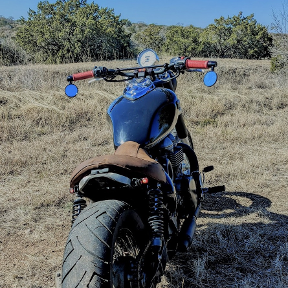Welcome to the Onshape forum! Ask questions and join in the discussions about everything Onshape.
First time visiting? Here are some places to start:- Looking for a certain topic? Check out the categories filter or use Search (upper right).
- Need support? Ask a question to our Community Support category.
- Please submit support tickets for bugs but you can request improvements in the Product Feedback category.
- Be respectful, on topic and if you see a problem, Flag it.
If you would like to contact our Community Manager personally, feel free to send a private message or an email.
Surfacing with the new stuff
 billy2
Member, OS Professional, Mentor, Developers, User Group Leader Posts: 2,115 PRO
billy2
Member, OS Professional, Mentor, Developers, User Group Leader Posts: 2,115 PRO
You gotta watch this:
And then use these:Greg's Curve and Surface eval tools are here:
This is my 3rd generation design for this part, it's a 2016 BMW R9T (8 years old):
This is the most primary surface in my design, Greg talked about these in his video and getting these correct is important. Most organic designs will have primary surfaces:
This is actually a good single span surface patch with degree 3 & 4 to create it's shape.
This is how my old design was created using a simple loft through 3 curves:
Turns out this surface is terrible:
Instead of using a 3 curved loft to create my primary surface, I switched to a 4 sided boundary surface:
This new boundary surface is off by .309 mm using a 4th order target and that doesn't matter for the design. The red dot in the image above shows maximum deviation between the old & new shapes.
This middle curve defines where the part matches the seat:
I can't remove it or ignore it.
So who cares about all of this? I can't say that with this small printed part you can see a difference between clean & dirty surfaces. If you chrome plated these parts and knew what to look for, you might see a difference. Maybe with a larger shiny red car you could see a difference in the surface types. There are benefits though, what you do see is a speed up & robustness in the model.
Time to rebuild clean surfaces is 5.03 seconds:
Time to rebuild dirty surfaces 6.01 second:
This is a real use case utilizing the newer surface tools. It pays to get it right because when designing organic shapes, you rebuild a lot and you tend to push the design to it's boundaries. You have to use Greg's tools and focus on spans & curve degree for the surfaces created keeping the surfaces lean and mean.








Comments
Nice work!!
Thanks for your videos